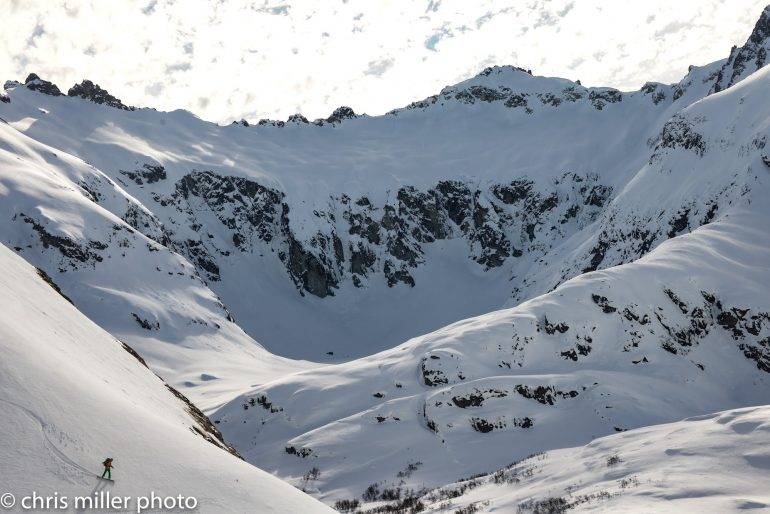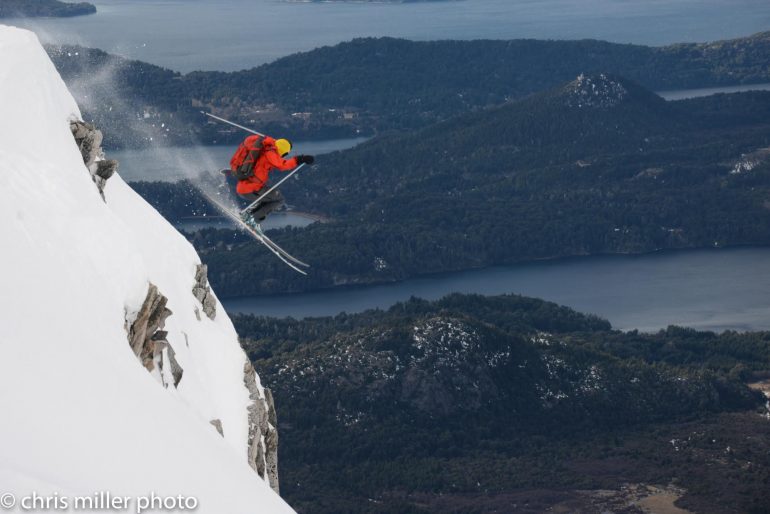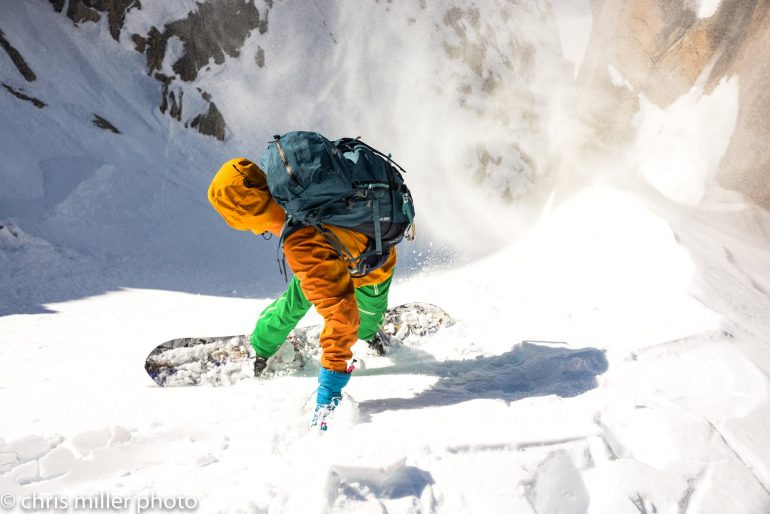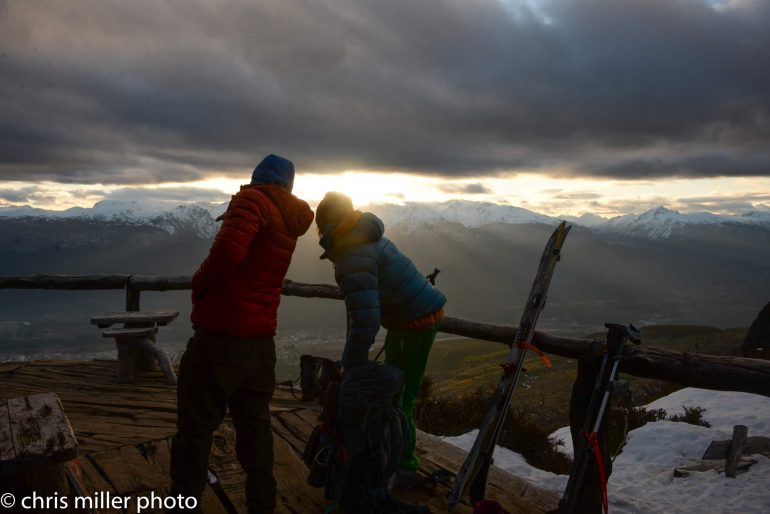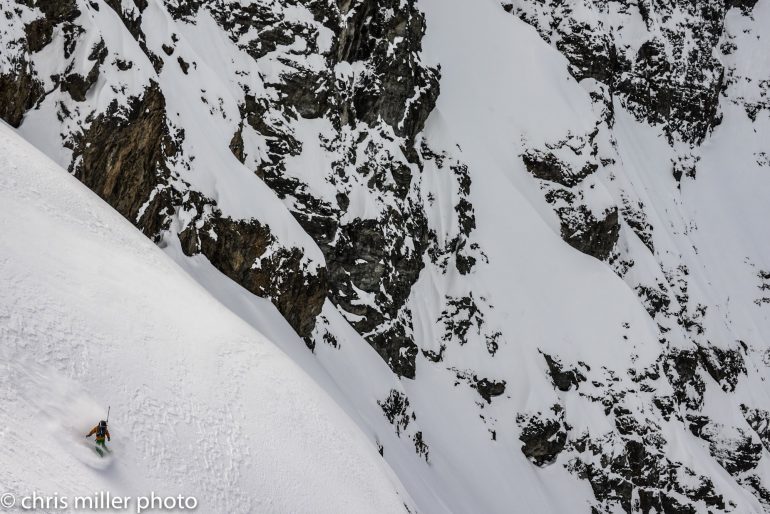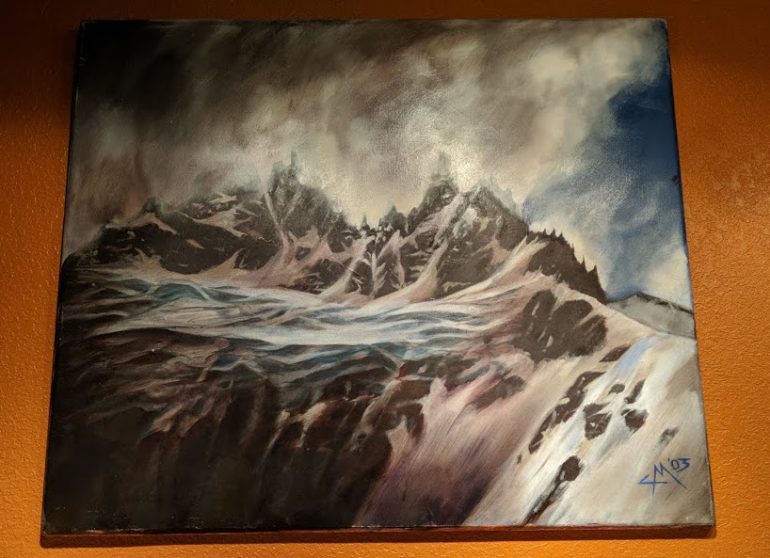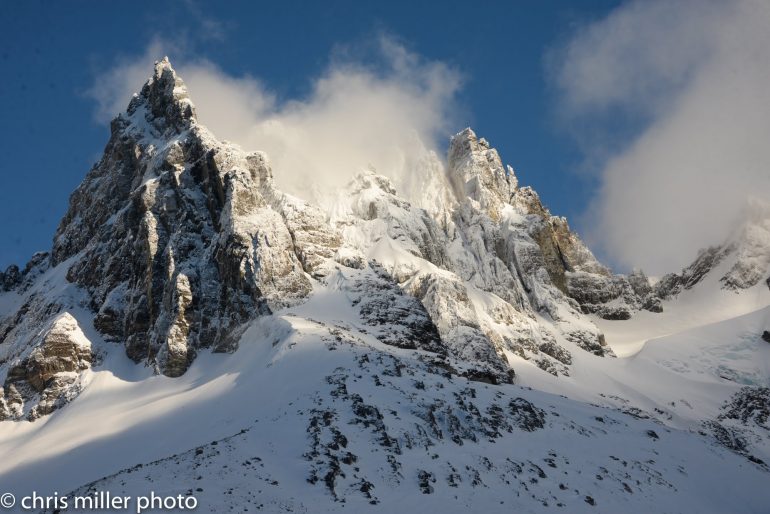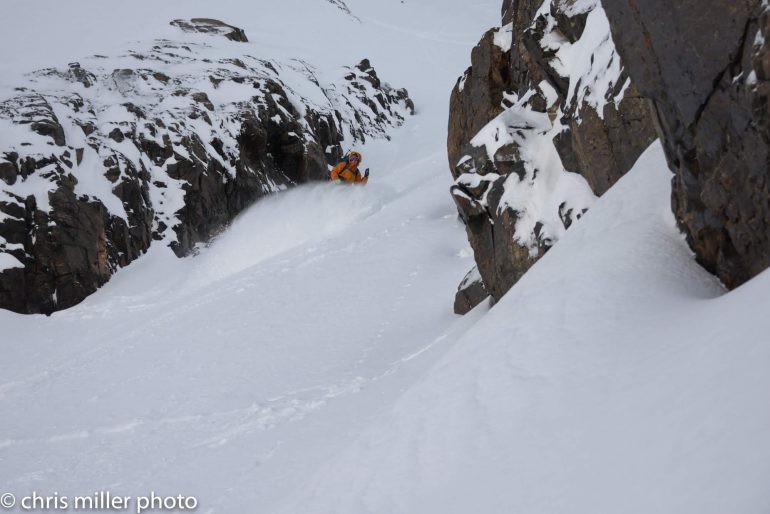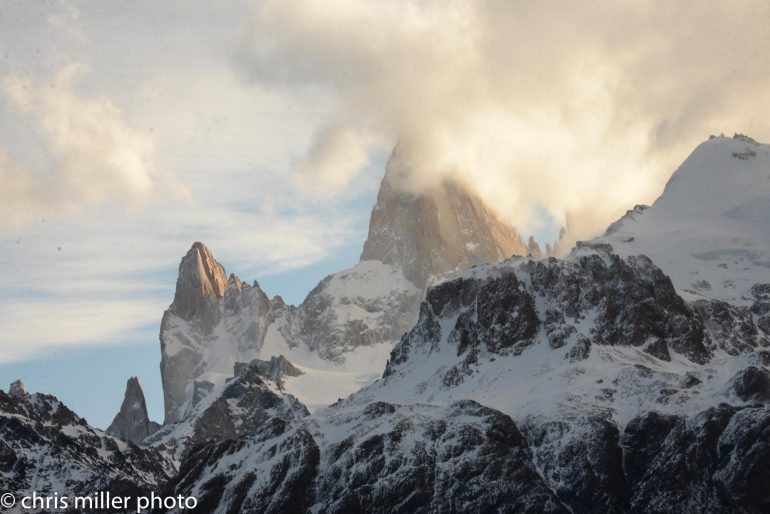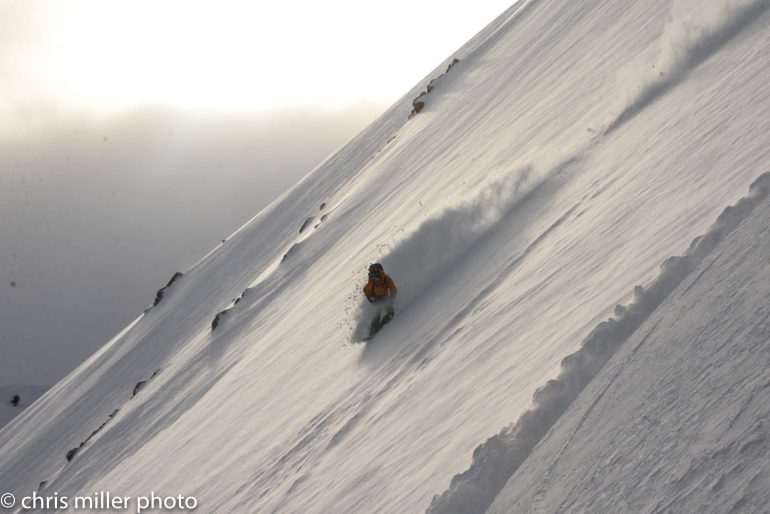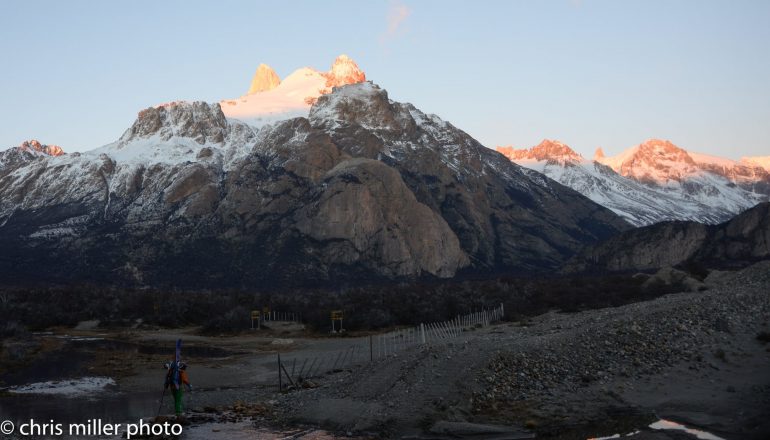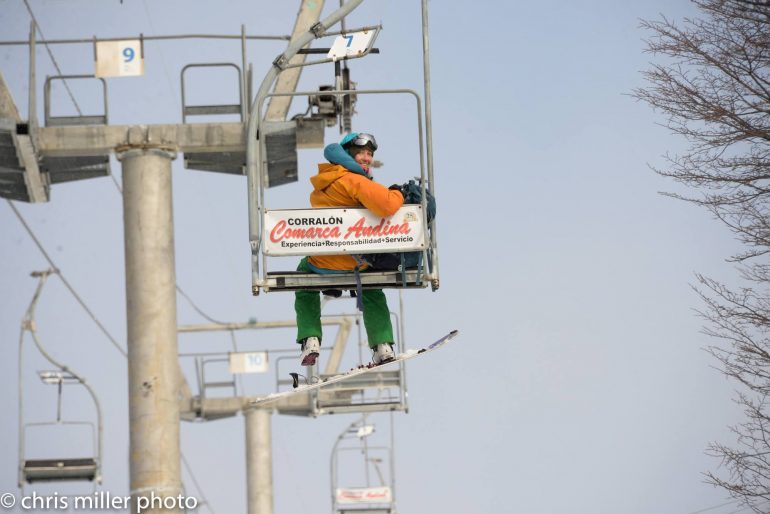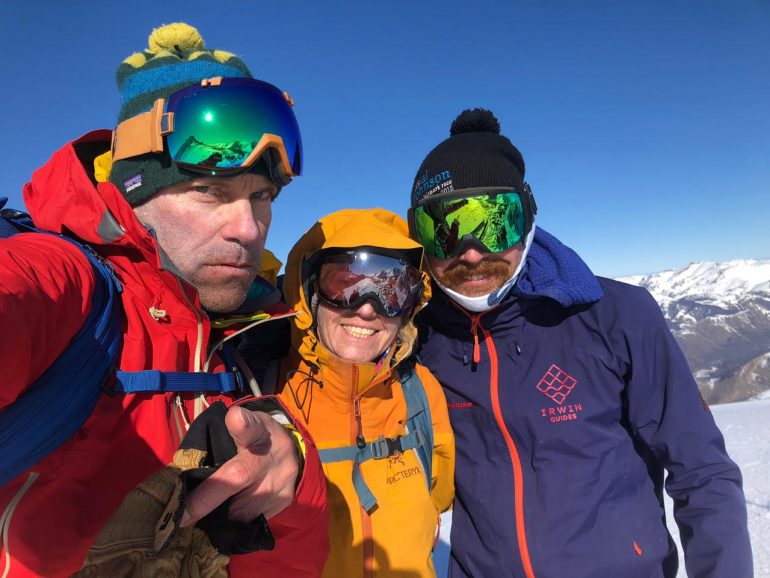The highs and lows of a Patagonia ski journey
Words and photos by Chris Miller
I had been dreaming about this for a long time. Patagonia. Cerro Castillo. Ushuaia and the end of the world. In the spring of 2019 Sarah, my partner, pulled the trigger and bought tickets to Bariloche, Argentina. I picked up extra work. I sold my beloved motorcycle.
We decided to give ourselves six weeks. The goals for this trip were unclear; we didn’t know what was down there, nor could we find much information. I met with a friend who guides in Chile, Donny Roth, and jotted down some names of places in my journal. I continued to take notes throughout the trip. The journal became a treasure map. I wanted to get to a zone in Chile that I had visited in 2001, and I wanted to journey all the way to Ushuaia. Sarah was simply excited to ride new terrain and loves traveling to Latin countries. She is the sender, the enabler. I probably would have still been romanticizing about the idea at a bar if it was not for her. The romantic ski quest became a treasure hunt with hopes of skiing to the end of the world.
Our good friend Andy Sovick had been traveling South America with family for months and had landed in Bariloche. This also was a catalyst for the trip. We flew to Bariloche with his ski gear and he picked us up from the airport with his German camper van named ‘Paco.’ We skied the first weeks with Andy at the infamous Refugio Frey, and our favorite Lopez, as detailed in Andy’s trip report.
Andy dropped off Sarah and I at a trailhead and we parted ways. It was about a seven mile walk to Refugio Jakob that gradually climbed 2200 feet, half of which was in transitional snow. It took us seven hours for some reason. We got to the refugio at dark. The best setup for these parts would be a lightweight ski/boot with skis at 95-100mm underfoot accompanied with running or approach shoes for long approaches in dirt. I just had my daily driver 110 Romps and Maestrale RS and Sarah carried a Coldsmoke splitboard with Phantom Tec bindings and Atomic hard boots. It’s safe to say we were pretty fit by the end of the six week trip.
Refugio Jakob was an incredible hut with interesting ski terrain but probably the low point of the trip two weeks in. I developed a sore throat that turned into a nasty cold that plagued us throughout the coming weeks. My mind was cloudy from the sickness; I failed to read the snowpack and triggered a small but stout windslab that shook us up. Never take the “White Dragon” for granted, especially in Patagonia where the winds seem to blow in all directions at times.
Connections go a long way in Patagonia. A good friend from Crested Butte grew up in Bariloche and hooked us up with her sister’s house. Andy had also hooked us up with a local guide named Diego, who was a beta source throughout the trip. After a day of research and recovery, we hired a rental car, packed our things and headed South.
Just a few hours south of Bariloche lies El Bolsón and Refugio Piltriquitrón. This particular rufugio has a road that goes most of the way to it, and takes about an hour to walk in. You don’t need reservations at the refugios, but it’s always good to contact the hut keeper. Finding that contact also can be a treasure hunt of its own.
The views were spectacular. Piltriquitrón means “hanging from the clouds” and the refugio sits perched at treeline (around 5000 ft) on Cerro Piltriquitrón (7415 ft). The refugio over looks the town of El Bolsón below. Across the valley to the west is a range that borders Chile that has more snow, and multiple refugios. The ski area Cerro Perito Moreno can also be seen across the valley that we visit later in the trip. We quickly befriended a local splitboarder who told us where to go.
El Bolsón has a tranquillo mountain town vibe, a small ski area with incredible side country, and friendly local shredders. We contemplated another refugio but decided to hit the road. The goal was to make it to Ushuaia, but it became obvious that there was just a lot to see along the way and it takes time to figure each zone out.
We crossed into Chile at Futaleufú and drove eight hours through pissing rain to Coyhaique. Coyhaique is a town of 50,000 that has poor air quality due to lena (firewood) smoke and a valley inversion. It is the launch spot for the Aysén region that has abundant national parks and feels like the heart of Patagonia. We really felt far from home here. For some reason the language barrier became more real, and we stood out as ‘gringos.’ I traveled here in 2001 for a NOLS course, and took 18 years to make it back. The mountains were beautiful, but we had no information either than a few zones I recognized and some potential terrain off that highway that we found on Google Earth. We stopped by the NOLS school and met a man named Raul who pointed us in the direction of Villa Cerro Castillo where we would find a ranchero named Jorge. Jorge pointed us to the highway zone we’d picked out earlier.
We were thrilled to find skiing after traveling so far. We stayed at a hostel in Villa Cerro Castillo and planned three nights in Parque Cerro Castillo. We downloaded maps and weather reports over the spotty wifi in the hostel. The weather did not look promising, but we decided to go for it anyway, hoping for a break.
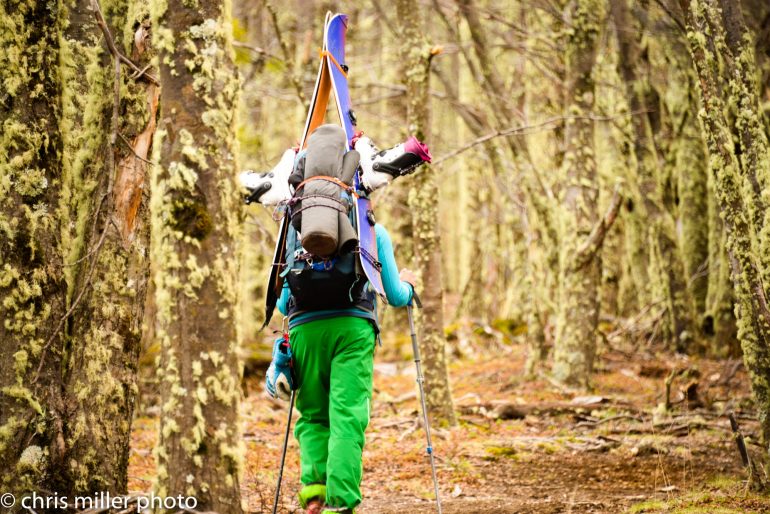
typical Patagonian approach climbing through the Lenga. Lenga is a beautiful deciduous tree found in Patagonia. The old growth is your friend, the young ones are your enemy for they are stout and are nearly impassible when bushwhacking
After spending 30 hours tent-bound, we got our view on the mountains that we had not seen yet. In Patagonia, peak objectives are generally not possible on skis. Every mountain has a giant tower on top!
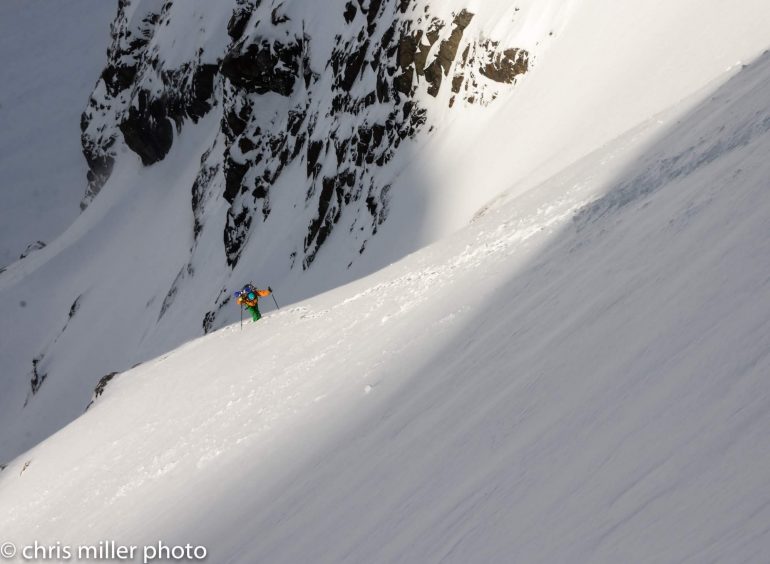
A beautiful line that we were working on. We had seen some recent activity and got some pit results within the new snow two-thirds of the way up. We were so far out there, and above ice cliffs. We decided to ski down from a safe zone which offered incredible powder
We then headed up the West side of Cerro Castillo for 2500 feet of turns back down to our little campo. We spent Sarah’s birthday night at the campo. Unfortunately we drank all of the wine the day before when we were tent bound.
This place had really grabbed our hearts. We contemplated staying, but the weather was turning, and Chile is expensive. Crossing the border in a remote location was pretty bumpy — we ended up having to drive 30 minutes back into Chile to get a stamp before Argentina would let us in.
After enjoying a luxurious night in Argentina, we drove another eight hours on La Ruta 40 across the Argentine Steppe. It was so lonely out there except for the guanaco and cars so infrequent the drivers waved. Abandoned vehicles and blown tires were strewn across the highway sides. We were advised not to drive in bad weather for it would be impassible if muddy in our small car.
That evening we arrived in El Chaltén. There is apparently this amazing mountain called Fitzroy… but we could not see it. Winter is the off season and we found the one bar open that had wifi, so we arranged an Airbnb which for $18 USD for a trailer with a kitchen.
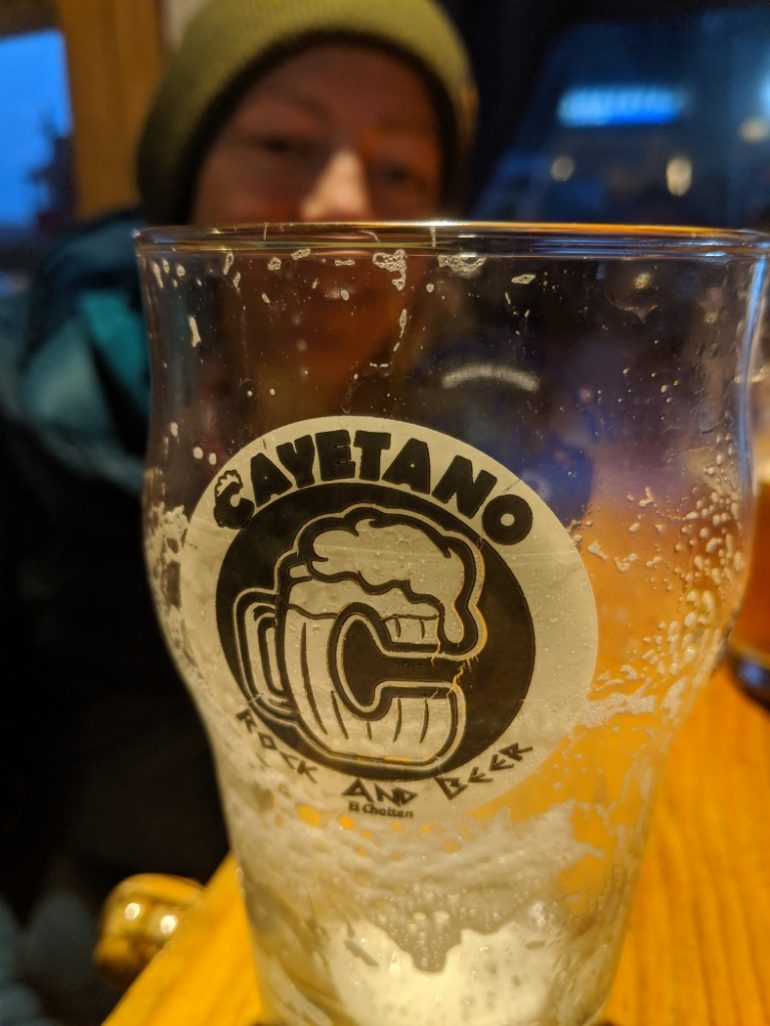
The one bar open obviously became our favorite bar. The owner was super friendly and by the end of the week, his father just started bringing us random appetizers for free.
Diego had given us a few maps made by his wife. We also used Avenza Maps, an app which we used frequently in El Chaltén and highly recommend. Loma del Diablo was apparently the easiest to access, but we could not figure out how to get to it. After talking to a road worker, we learned that people go through a nearby creek called Mosquito which leads to a social trail through the lenga forest. It took about an hour to hit snow. Once again the mountains were socked in and we just had faith the terrain would reveal itself.
We got a weather window so had to check out the classic ‘Cerro Electrico.’ To put things in perspective the peak is 5000 feet above the valley floor.
We had spent nine days in El Chaltén and had some incredible skiing. Towards the end our our stay we explored a zone with giant couloirs that we have been told afterwards have not been skied. We unfortunately turned around both attempts because the wind had worked over the snow. We met a few locals along the way that helped us figure it out.
Winter is a quiet time to go to El Chaltén and most shops and restaurants are closed. It is an end-of-the-road town with about 1500 people that survives solely on tourism. It also has limited land and there is a housing crisis, which made us feel a bit guilty for staying at Airbnb’s. It reminded us a lot of the mountain town where we live in Colorado. The town is simply out of land, so people have resorted to trailers and tiny houses. The workers get driven out of housing because property owners realize they can make more money on tourists via Airbnb and Vrbo.
Time and money were running short. We decided to head North rather than continue to Ushuaia. Alas our treasure hunt would not lead us to the end of the world. This was a tough call but Sarah pointed out it would be another four days in the car with border crossings and boats.
We liked Cerro Castillo so much we had to go back. This time we took the Ferry from Chile Chico. After another border crossing, we stopped back by El Bolsón. We stayed at a small hostel where a man who grew up there told us to hit up the local ski hill, Perito Moreno. It costs $16 USD (low season) and only has a few chairlifts but offers world class side country.
We arrived back to our friend’s house in Bariloche with a few days before we retuning to the states. We reconnected with Diego for a day tour on ‘El Blanco,’ then spent another night at Refugio Lopez with a guy we met from Burlington and another from New Zealand. Conditions were starting to transition to spring and for the first time on the trip we had to deal with nasty rain crust. We were still able to find some pow though!
Thirty hours of travel later, we are back in Colorado and back to work. We are still trying to decompress, and put it all together. We left in the height of summer, now it is fall. More than ever we are motivated to save up and take another trip.
The Patagonian ski experience is about exploration both culture and mountains. There are no guidebooks but certainly quite a few guide services. The meat is incredible, as well as the wine. There are hints of the American West, or at least what it was in the past. As I write this I realize the irony of writing for a ski website, because the internet has changed how we ski. Both better and for the worse. I hope that my photos and words have given a hint of Patagonian flavor, but not too much. I hope that others will have a similar experience of the treasure hunt that we have had.
Beyond our regular guest bloggers who have their own profiles, some of our one-timers end up being categorized under this generic profile. Once they do a few posts, we build a category. In any case, we sure appreciate ALL the WildSnow guest bloggers!

